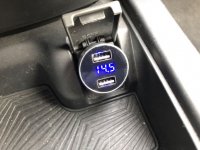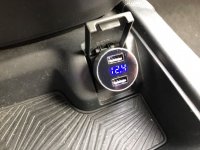What is acceptable?
Our ‘03 CRV will drain the battery after a week or so. I don’t know how long it takes, but 2 weeks will do It, after that it’s low enough it won’t crank. Today I hooked up a Fluke and I measured 60mA just sitting there. I started pulling fuses and fuse #9, a 10A for “back” drops the draw down to 19mA. Poking around, that fuse powers some sort of communication widget.
60mA seems high to me, but maybe that’s normal? Seems like the battery should withstand that for quite some time. Battery is only a couple years old (I think) but it’s been discharged enough times that it’s probably old now. It’s a small group 51 battery, which I don’t think helps.
I’ll leave the meter hooked up in min/max for a few hours and see if something is waking up every few hours.
Our ‘03 CRV will drain the battery after a week or so. I don’t know how long it takes, but 2 weeks will do It, after that it’s low enough it won’t crank. Today I hooked up a Fluke and I measured 60mA just sitting there. I started pulling fuses and fuse #9, a 10A for “back” drops the draw down to 19mA. Poking around, that fuse powers some sort of communication widget.
60mA seems high to me, but maybe that’s normal? Seems like the battery should withstand that for quite some time. Battery is only a couple years old (I think) but it’s been discharged enough times that it’s probably old now. It’s a small group 51 battery, which I don’t think helps.
I’ll leave the meter hooked up in min/max for a few hours and see if something is waking up every few hours.


